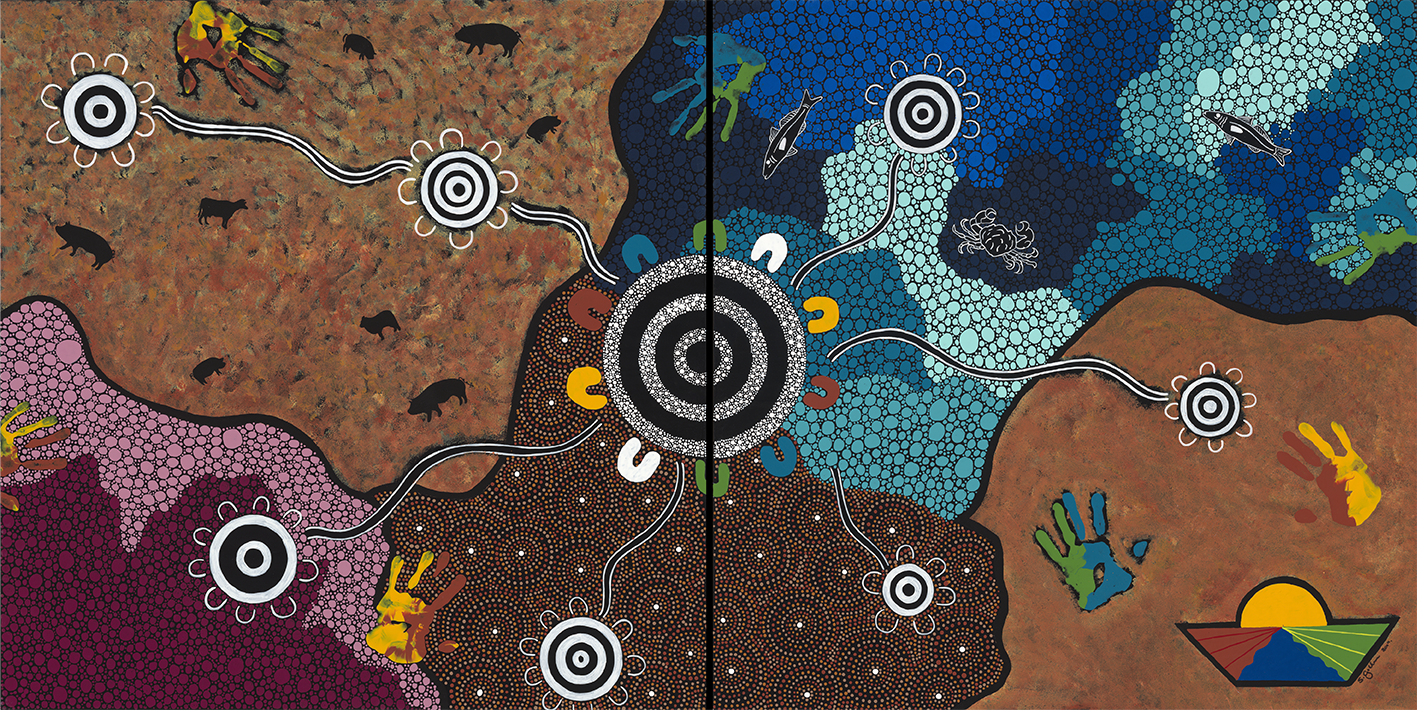The Kaurna are the original people of Adelaide and the Adelaide Plains.
Kaurna territory extended from Cape Jervis at the bottom of the Fleurieu Peninsula to Port Wakefield on the eastern shore of Gulf St Vincent, and as far north as Crystal Brook in the Mid North.
Clans were found living in the vicinity of Snowtown, Blyth, Hoyleton, Hamley Bridge, Clarendon, Gawler and Myponga.
The Kaurna, probably numbering around 300 people, were usually called by the colonists the Cowandilla or Adelaide tribe.
Other neighbouring groups are the Narungga of Yorke Peninsula, the Nukunu to the north, the Ngadjuri to the north east and the Peramangk of the hills to the east.
The Kaurna spoke a complex language, which reflected their sophisticated culture and deep knowledge of the environment.
The Kaurna people lived in family groups called bands, who lived in defined territories called pangkarra which were "passed" from father to son upon his initiation.
Kaurna spirituality recognizes the connectedness of people and culture with the worlds of plants, the animals and stars.
The world of the Kaurna was irrevocably altered with the arrival, first, of European explorers, then whalers and sealers along the coast from the early 1800s, and then, finally, the South Australian colonists of 1836.
It was the Kaurna who first experienced the shock of colonisation.
The colonists soon spread across the Adelaide Plains, establishing farms and settlements along the creeks and fertile flats, fencing, building houses and claiming the country.
Some worked with or for the colonists; others attempted to continue their traditional way of life.
The Kaurna were being decimated by the process of colonisation as new diseases, alcohol, and, underpinning everything else, loss of land and livelihood, took a heavy toll.
By the 1850s, few of the remaining Kaurna were in Adelaide.
The last two decades of the twentieth century saw the re-emergence of a group of Aboriginal people who speak for the Adelaide Plains and identify as Kaurna.
A significant part of the Kaurna cultural renaissance has been the revival of the Kaurna language.
Kaurna language is frequently heard at public and ceremonial occasions as Kaurna elders perform a Welcome to Country.
Information source: Wikipedia & Adeladia

This artwork by Sam Gollan, Kaurna and Ngarrindjeri woman, was designed and painted for Wakefield Regional Council as part of Reconciliation Week. The colours represent the Wakefield region (blue for the gulf, pink for the lakes and brown and ochre for the fertile farmlands). The story behind the designs is about community organisations coming together, working as one and making this great community unite. Wakefield is a place where knowledge and culture unite and where everyone comes together to discuss the best outcome for all.


























